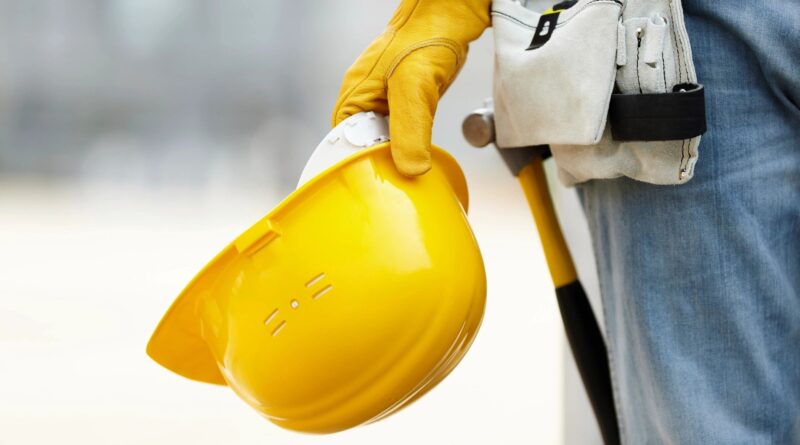Top 25 Interview Questions For Fresher Civil Engineers
Q1. What is the working principle of surveying?
Answer: The fundamental principle of surveying is to work from the whole to the part.
Q2. In a chaining operation, Who is the Leader, and who is the Follower?
Answer: The chainman at the forward end of the chain who drags the chain is known as the leader. The one at the rear end of the chain is known as a follower.
Q3. How many ranging rods are required to range a line?
Answer: At least three ranging rods are required for direct ranging and at least four for indirect ranging.
Q4. What is Fine Aggregate?
Answer: As per IS 383, Aggregate most of which passes 4.75 mm IS Sieve.
Q5. What is Coarse Aggregate?
Answer: As per IS 383, Aggregate most of which retained on 4.75 mm IS Sieve.
Q6. What is All-in-Aggregate?
Answer: As per IS 383, Material composed of both fine aggregate and coarse aggregate is known as All-in-Aggregate.
Q7. Which grade of concrete is considered as HSC (High Strength Concrete)?
Answer: As per IS 456: 2000 [Table – 2], the grade of concrete considered as HSC (High Strength Concrete) is M65, M70, M75, M80, M85, M90, M95, and M100.
Q8. What is the minimum curing period for Super Sulphate Cement?
Answer: The minimum curing period for Super Sulphate Cement is 7 days.
Q9. Convert 1 Soot into millimetre?
Answer: 1 soot = 3.175 mm
Q10. What is Anchorage Length?
Answer: As per IS Code 13920: 2016, Clause – 6.2.5, Anchorage length equals to development length of the bar in tension and plus 10 times bar diameter minus the allowance for 90 degrees bend.
Q11. What is the Tension and Compression zone in Cantilever Beam?
Answer: In Cantilever Beam, the Tension zone is located above the Neutral Axis and the Compression zone is located below the Neutral Axis.
Q12. What should be the spacing considered when we use coupler in a longitudinal reinforcement bar?
Answer: As per IS Code 13920: 2016, Clause – 6.2.6.2 (b), The spacing between adjacent longitudinal bars shall be based also on the outer size of the coupler to allow easy flow of concrete.
Q13. What is the factor used to convert from ‘Meter’ to ‘Feet’?
Answer: To convert from ‘Meter’ to ‘Feet’ = Multiply by 3.28; To convert from ‘Feet’ to ‘Meter’ = Divide by 3.28
Q14. What is the Rolling Margin Tolerance for Nominal mass for a 25 m diameter bar?
Answer: As per IS 1786, the Rolling Margin Tolerance for Nominal mass for 25 m diameter bar is ±3 %.
Q15. What is the allowable maximum percentage of Carbon in the manufacturing of TMT (Thermo Mechanically Treated) Bar?
Answer: As per [IS 1786, Clause- 3.2], the allowable maximum percentage of Carbon in the manufacturing of TMT (Thermo Mechanically Treated) Bar is 0.25 %
Q16. What is the Standard Length of Steel Bar taken for Rolling Margin?
Answer: The Standard Length of Steel Bar taken for Rolling Margin at Construction site is 1 meter.
Q17. What is the full form of ‘BOQ’?
Answer: The full form of ‘BOQ’ is Bill of Quantities.
Q18. What is the reference IS code used for the Bend Test of a Steel bar?
Answer: The reference IS code used for the Bend Test of a Steel bar is IS 1599.
Q19. What is the angle for the Bending of steel bar for the Bend test?
Answer: As per IS 1599, the angle for the Bending of steel bar for the Bend test is 180 degrees.
Q20. What is the diameter of the Mandrel used for the Bend Test of Fe 500 for diameter 20 mm?
Answer: As per IS 1786, the diameter of the Mandrel used for the Bend Test of Fe 500 for diameter 20 mm is 4Φ, where Φ is the diameter of the bar.
Q21. What is the standard Diameter of Tremie Pipe?
Answer: As per IS 456: 2000 [Clause – 14.2.4(a)], The tremie pipe shall be not less than 200 mm in diameter and shall be large enough to allow a free flow of concrete and strong enough to withstand the external pressure of the water in which it is suspended, even if a partial vacuum develops inside the pipe.
Q22. What is the angle for the Bending of steel bar for the Rebend test?
Answer: For the Rebend test, Initially bend the bar to an included angle of 135 degrees. Keep it in boiling water at 100 degrees for 30 minutes. Then cool it down for some time. After cooling bent it back to an included angle of 157.5 degrees.
Q23. Which IS code specified for Mandrel diameter for Bend and Rebend test?
Answer: The IS code specified for Mandrel diameter for Bend and Rebend test is IS 1786.
Q24. What is the Effective depth of beam?
Answer: As per IS 456: 2000 [Clause – 23], Effective depth of a beam is the distance between the centroid of the area of tension reinforcement and the maximum compression fiber, excluding the thickness of finishing material not placed monolithically with the member and the thickness of any concrete provided to allow for wear. This will not apply to deep beams.
Q25. What is the maximum and minimum tolerance for concrete cube characteristics compressive strength result?
Answer: As per IS 456: 2000 [Clause – 15.4], the maximum and minimum tolerance for concrete cube characteristics compressive strength result is +15% and -15%.

